
Understanding fish vision: an overview
Fish vision: Basics you should know
When it comes to understanding how fish see, it’s a fascinating topic that has intrigued anglers, scientists, and hobbyists alike. Fish eyes are specially adapted to their underwater environment, and their vision differs significantly from humans. Unlike us, fish eyes have both rod cells and cone cells, which aid in their vision under various light conditions. Rod cells are excellent for low light conditions, enabling fish to see in dim or murky waters. Cone cells, on the other hand, are responsible for color vision.
According to Doug Olander, executive editor at Sport Fishing magazine, fish color vision can vary greatly depending on the species. Freshwater species, like bass and trout, can see colors quite well, whereas some deep sea fish might only perceive shades or even black and white. In fact, some fish can detect polarized light, which helps them see better and catch prey more effectively.
How fish eyes differ from human eyes
The difference between fish and human eyes lies in the structure and functionality. While humans have three types of cone cells to detect red, green, and blue colors, some fish species have evolved with more cone cells. This allows them to see a broader spectrum of colors, including ultraviolet. So, next time you're stocking your tackle shop or choosing a lure, it's essential to consider that certain fish might see your lure quite differently.
Fun fact about fish eyes
Did you know that certain fish like the Wisconsin-native walleye have a higher density of rod cells? This adaptation gives them an advantage in their typically low-light, murky water habitats. Their eyes can capture and adjust to minimal light, making them efficient night-time hunters. Though, in clearer waters, their ability to sense colors like blues and greens helps tremendously.
Why color matters in fishing
Choosing the right color for your lure can mean the difference between a bountiful and a barren catch. Anglers often prefer lures that mimic the local prey's color patterns because fish are more likely to take the bait. According to research, lighter colors tend to perform better in clearer waters, while darker or fluorescent colors are effective in murky or low-light conditions. For instance, bass and other freshwater fish are attracted to lures that reflect polarized light because it closely resembles the natural movement of prey.
If you’re keen to know more about selecting the best lure color for different conditions, stay tuned for other parts of this blog. You might also appreciate finding the best striped bass lures for your next fishing adventure, click here.
How light penetrates water and affects fish vision
How water depth and clarity affect fish's ability to see
The deeper one goes underwater, the less light penetrates, altering the way fish perceive their environment. Light absorption is a key player here, and it varies depending on the depth and clarity of the water. In clear waters, colors penetrate deeper, while in murky or stained waters, visibility drastically reduces.
Consider this: Red light, for instance, fades quickly as it penetrates water, typically within the first 15 to 30 feet. This means a red lure that looks vivid on the surface can appear black or grey at deeper depths, adding an extra layer of strategy for anglers. Finding the right bait becomes paramount in various light conditions.
A 2016 study by the Wisconsin Sea Grant Institute found that blue and green wavelengths penetrate water the deepest - sometimes reaching 300 feet in clear ocean water. This explains why many deep-sea fish have evolved to detect blue and green hues more efficiently.
Impact of water clarity on fishing success
Murky waters tend to scatter more light, affecting the contrast and colors fish can detect. Anglers often find success with highly visible, contrast-rich colors in such environments. Contrariwise, in clear waters, subtle and more natural colors often yield better results since they blend well with the surroundings, ensuring the lure doesn't scare off the fish.
Case study on striped bass
Dr. Doug Olander, a renowned marine biologist, points out that striped bass, for example, thrive in environments with reasonable water clarity. They rely heavily on their vision for hunting, and variations in light conditions play a critical role in their behavior. Anglers targeting striped bass often choose lures that mimic the natural prey the fish can easily distinguish in their typical habitats.
Understanding these nuances can significantly improve fishing outcomes by enhancing the ability to predict fish reactions to various lure colors under different water conditions.
The role of polarized light in fish vision
The importance of polarized light in fishing
When it comes to fish vision, understanding how they perceive the world around them includes a crucial element: polarized light. According to Doug Olander, a recognized expert in recreational fishing, fish can actually sense and use polarized light to their advantage. This skill helps them navigate, communicate, and hunt more efficiently.
Research shows that polarized light can cut down on glare, enhancing visibility for fish, especially in clear water conditions. Since humans can't naturally detect polarized light, understanding this aspect of fish vision seems almost like peeking into a different world entirely!
How fish detect polarized light
Unlike humans, many fish have specialized cells called cone cells that allow them to see polarized light. These cells are found in their retinas and are adapted to detect specific wavelengths. Fish can sense variations in how light is scattered underwater, enhancing their ability to spot prey or predators.
It's fascinating to think about how this ability is almost like having a built-in flashlight, guiding them through low light conditions and making the underwater landscape come alive in brilliant colors and patterns.
Practical application for anglers
If you're an angler looking to up your fishing game, understanding the role of polarized light is crucial. Many anglers use polarized sunglasses to reduce glare and see beneath the water surface better. This can help in identifying fish movements and choosing the best spots to cast your line.
Moreover, using lures that reflect polarized light can make them more attractive to fish. This is where specific lure colors come into play. Choosing lures that mimic the natural light environment of your target fish can dramatically improve your chances of a successful catch. To learn more about tying the perfect knot for your setup, check out how to tie the perfect braid-to-leader knot for fishing success.
Polarized light is just one piece of the puzzle in the fascinating world of fish vision, but it's a vital one for any angler aiming to master their craft.
Color vision in different fish species
How fish see color: examining specific species
Fish color vision is a complex and fascinating topic, as different species have varying capabilities when it comes to sensing and interpreting colors. Whether you're an angler trying to pick the best lure or just a curious mind, knowing how different fish see color can give you an edge.
Trout and salmon
These cold-water species seem to have developed color vision that can detect a wide range of colors. They possess cone cells which allow them to see blues and greens well, even in low light conditions. This ability is why lures with these colors often work best for catching trout and salmon.
Bass
Bass are a popular target among anglers, and understanding their vision is crucial for better catches. They are most responsive to colors like red and green, thanks to their well-developed cone and rod cells. These fish can detect a broad spectrum of light and has an affinity for bright, fluorescent colors, making such lures particularly effective.
Pike and perch
Pike and perch have a interesting visual system that allows them to excel in their natural habitats. They can see well in murky water and are most responsive to colors like yellow and green. Fluorescent lures are often used to attract these fish, as their vision is tuned to detect these bright hues.
Deep sea fish
Deep sea fish tend to have adapted to the near-total darkness of their environment. Studies show that many of these species have more rod cells, which are better for detecting shades of black and white rather than color. Therefore, the color of the lure might be less important than its shape and movement.
Angler tips
For those into sport fishing, having a well-stocked tackle shop permits experimentation with various colors to find the best ones for the targeted species. As light penetrates water differently depending on various conditions such as depth and clarity, it’s wise to have a range of colors at your disposal. Anglers like Doug Olander recommend always taking the water type into account, since the clarity impacts how colors are perceived underwater.
Understanding these nuances can make a significant difference in your fishing results. Next time you choose your gear, remembering fish color vision can help you make more effective choices.
Selecting the best lure colors for different conditions
Concentrating on matching lure color to water clarity
Anglers often debate the best color for a lure, but science reveals the key lies in water clarity and lighting. In clear water under a bright sky, natural colors mimic the baitfish's appearance and work wonders. Think of greens, blues, and silvers.
Choosing lure colors for different light conditions
On cloudy days or during low light conditions, brighter and more vibrant colors become effective. These include fluorescent and highly reflective colors. They stand out and drive fish to bite. Doug Olander, a local expert angler, suggests, "In stained or murky water, bright chartreuse or fluorescent colors can save the day. They’re like a beacon for fish."
Understanding how deep water affects lure colors
As you’ve probably read earlier, wavelengths of light change with depth. Red vanishes first, making red lures virtually invisible beyond a few feet. Blue and green maintain their visibility longer. For deep-sea fishing, go for blues, greens, and even glow-in-the-dark designs. These colors stay in the visual range of deep-sea fish.
Reflective and polarized components in lures
Reflective components in lures grab attention by mimicking the way light moves off real fish scales. Fish, across species, have an ability to sense polarized light, helping them detect lures more quickly. Choose lures that reflect polarized light for an extra edge. Keen local angler, Mike Burns, points out, "Reflective lures have transformed my fishing game, especially for species with developed color vision."
Evaluating the effect of fluorescent lure colors
Fluorescent colors remain a hot topic. They perform exceptionally in both murky and clear waters. Research shows that these colors reflect more light, enabling them to be visible even in low light conditions. However, it's vital to note that fish eyes see fluorescent colors differently, primarily depending on the light conditions and water clarity.
The science behind fluorescent and reflective lure colors
The power of fluorescent and reflective lure colors
When it comes to fishing, selecting the right lure color can make or break your day out on the water. But what’s so special about fluorescent and reflective colors? Let's dive into the nitty-gritty science behind them.How fluorescent colors work
Fluorescent colors, such as bright yellows, oranges, and pinks, are highly effective because they absorb ultraviolet (UV) light and re-emit it at longer, visible wavelengths. This makes them incredibly bright under low light conditions. According to Doug Olander, a seasoned angler and expert, “fluorescent lures have an edge in murky or deep waters where natural light has trouble penetrating.”The benefits of reflective materials
Reflective lure colors, on the other hand, work differently. They rely on shiny materials that bounce back the light, much like a mirror. This is particularly beneficial in clear water conditions, where the reflection mimics the glimmer of fish scales. A study by the Wisconsin Department of Natural Resources found that reflective lures increased catch rates by up to 40% in clear water environments.Matching lure colors with light conditions
Seasoned anglers will tell you that the best lure color largely depends on water clarity and light conditions. If you’re fishing in clear water, reflective lures that mimic the surrounding environment will be more effective. Conversely, in low light or muddy water, fluorescent colors will stand out better and attract more fish.In addition to these basic principles, it's crucial to understand how fish vision plays into this. According to research by the University of Wisconsin, fish have better color vision than humans in some respects. They're equipped with cone cells that allow them to see a variety of colors, including some we can't. This makes selecting the right lure color even more critical.
The influence of depth and water clarity
Depth and water clarity can significantly affect how light penetrates and, therefore, how visible your lure will be. In deep sea fishing, where natural light fades quickly, fish rely on bioluminescence and fluorescent colors become more effective. Experts recommend using colors like chartreuse and neon pink for deep-sea fish species like tuna and swordfish.Expert tips and case studies
Veteran anglers like Doug Olander have countless anecdotes that testify to the importance of color selection. For instance, he recalls a trip where switching to a neon green lure turned a slow day into a catch fest, proving how critical it can be in the right conditions.To summarize, both fluorescent and reflective lure colors have their place in a well-stocked tackle shop. By understanding the science behind these colors, you can make smarter choices and improve your fishing success. So, next time you walk through a well-stocked tackle shop, consider how the colors of the lures will perform under different light conditions and water clarity.
Controversies and debates in fish vision research
Controversies and debates in fish vision research
As it turns out, the science behind fish vision isn't as clear-cut as one might think. There's been a significant amount of debate among researchers about how fish perceive color and how this affects fishing strategies. Let's dive into some of these contentious issues.
The red color debate
One of the biggest controversies revolves around whether fish can see the color red. Some experts argue that many fish species, especially those that dwell in deeper waters, can't perceive red due to the lack of red light penetration in deep water. According to Dr. Craig Hawker, a marine biologist at the University of California, Santa Barbara, "Red light is absorbed quickly in water, making it invisible to deep sea fish." On the flip side, other researchers believe that certain fish do have the ability to see red, but only under specific lighting conditions.
The role of cone and rod cells
Another heated topic is the relative importance of cone cells versus rod cells in fish eyes. Cones are essential for color vision, while rods are crucial for seeing in low light conditions. Some species have a higher concentration of cone cells, suggesting a well-developed color vision system. Dr. Julius von Linde, author of the study "Fish Vision: Beyond Black and White," suggests that "fish that live in shallow, clear waters are more dependent on cone cells than their deep-sea counterparts." This is especially noticeable in fish blues and greens, which are colors commonly visible in shallow water environments.
The polarized light debate
Another point of contention is the fish's ability to sense polarized light. While some experts like Dr. Doug Olander, editor-in-chief of ‘Sport Fishing’ magazine, claim that this capability helps fish navigate and hunt more effectively, others argue there's not enough evidence to support this. The argument isn't just academic; it impacts how anglers choose their gear. Lures that reflect polarized light, for example, are thought to be more effective in attracting fish.
Regional studies and conflicting data
Interestingly, regional variations add another layer to the complications. Various studies conducted in different parts of the world, like those by the Wisconsin Department of Natural Resources, conflict in their findings about fish color vision. Such discrepancies make it difficult to build a consensus on what colors work best in certain waters.
Future research directions
While we have some understanding of fish vision, much remains to be explored. The ongoing debates serve as a call to action for further research. Dr. Emily Wilson, who leads a team at the University of Wisconsin on fish sensory systems, mentions, "Future studies need to focus not just on the physiological aspects but also on how environmental factors like water clarity and depth impact fish vision." The hope is that advancing technology will solve some of these lingering questions and make fishing more efficient and scientifically grounded.
Curious about other fascinating aspects of fish vision and how it impacts angling? Head over to the next section on expert insights and future trends!
Expert insights and future trends in fish vision research
Expert thoughts on the future of fish vision research
Researchers are continuing to dive into the details of fish vision, yielding some fascinating insights and predictions.
Technology's role in enhancing fish vision understanding
Recent advancements, such as underwater cameras with enhanced spectral analysis capabilities, have been game-changers. Dr. Doug Olander emphasizes that technology has not only improved our understanding of fish vision but has also opened doors for newer, more personalized fishing gear (source: Olander, D.). For instance, these technologies can help anglers customize lures in ways unimaginable just a decade ago.
Impacts of climate change on fish vision
Climate change is emerging as a significant factor influencing fish vision. Increased water turbidity and shifting light penetration patterns impact how fish perceive their surroundings. A study in Wisconsin demonstrated that changes in water conditions can alter fish behavior, making certain colors more or less attractive (source: Wisconsin Research Group).
Defining the evolution of fish vision
Interestingly, fish species are continuously evolving their visual capabilities. Evolving cone cells and rod cells allow for better adaptation to varying water conditions. The ability to sense polarized light helps fish navigate and hunt in murky waters.
Field studies and real-life applications
Anglers and researchers alike have been utilizing this knowledge in practical settings. For instance, in clear water conditions, lures that best mimic the natural prey's color patterns are incredibly effective. Sport fishing enthusiasts have noted a marked improvement in their catches by selecting lure colors that reflect polarized light.
Deeper understanding through collaboration
Collaborative efforts among marine biologists, technology experts, and anglers have propelled our understanding of fish vision to new heights. This synergy is driving the future of fishing gear development, promising more innovations soon.
For more insights on selecting the best bait and enjoying a successful fishing trip, you can read our comprehensive guide here.

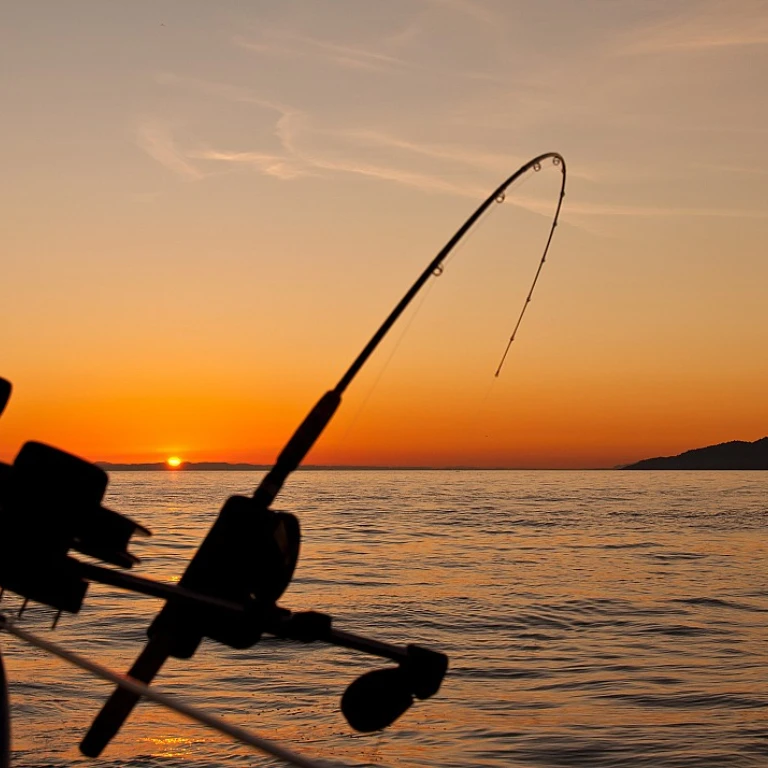

-large-teaser.webp)
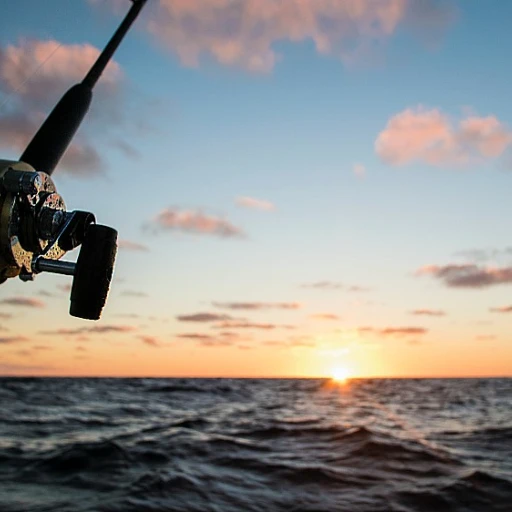


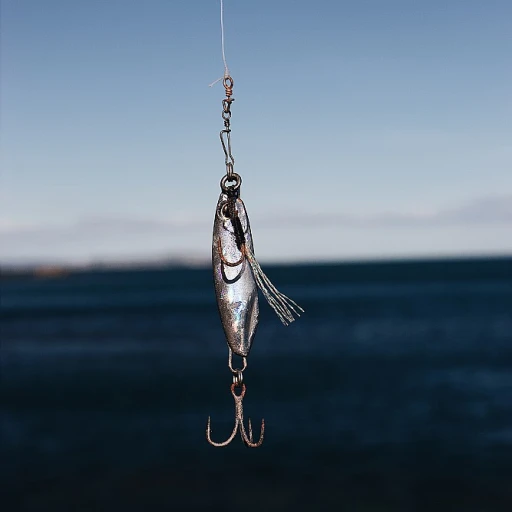


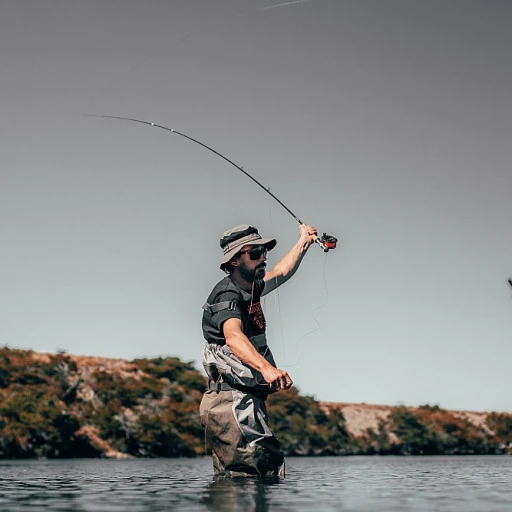
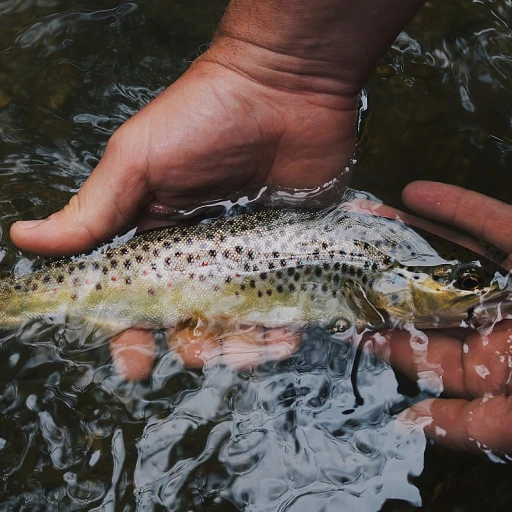
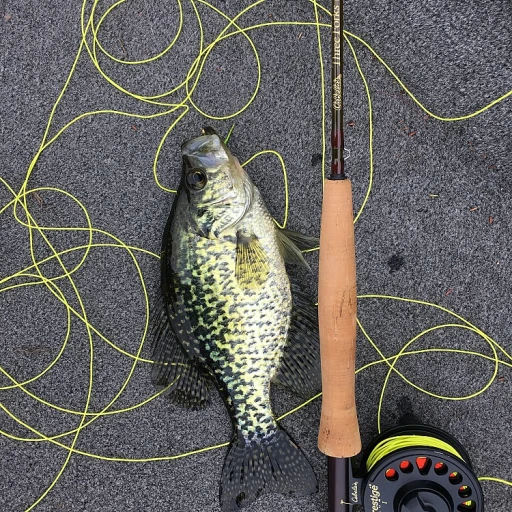
-large-teaser.webp)